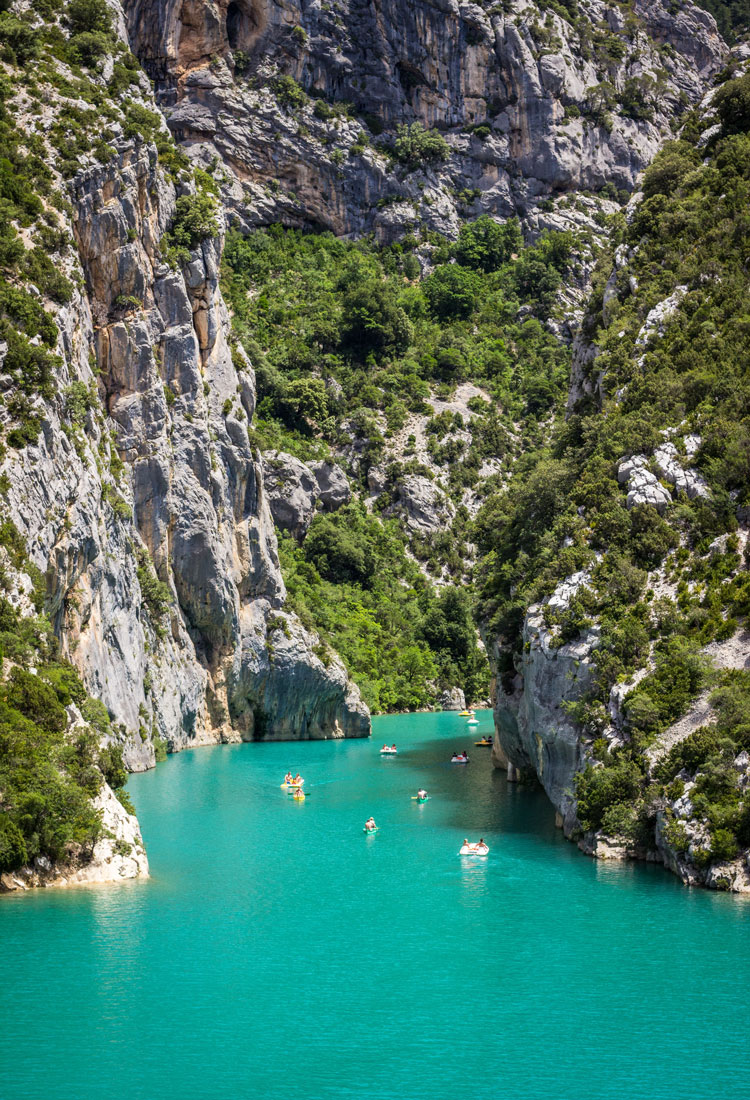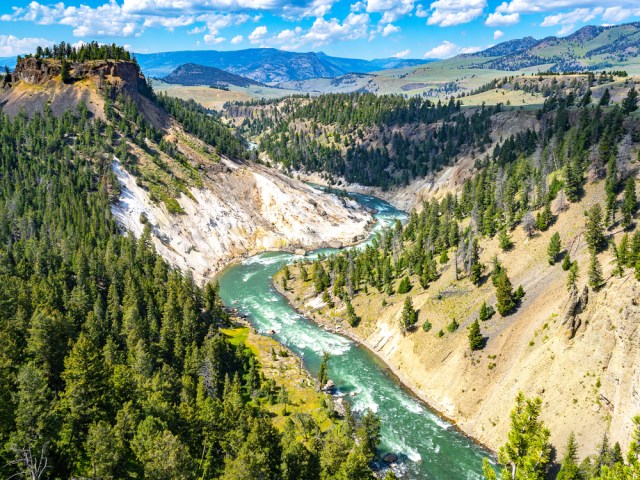You’ve got your ubiquitous bucket-list natural wonders like the Grand Canyon, the Great Barrier Reef, and Victoria Falls — all well worth the visit, even if means braving massive crowds of tourists. But there are much lesser-known geological phenomena around the world that are just as awe-inspiring and unmissable. From thermal pools in Turkey to salt flats in Bolivia to to sand dunes in Namibia, here 17 geological wonders you never knew existed.
Pamukkale Thermal Pools – Pamukkale, Turkey
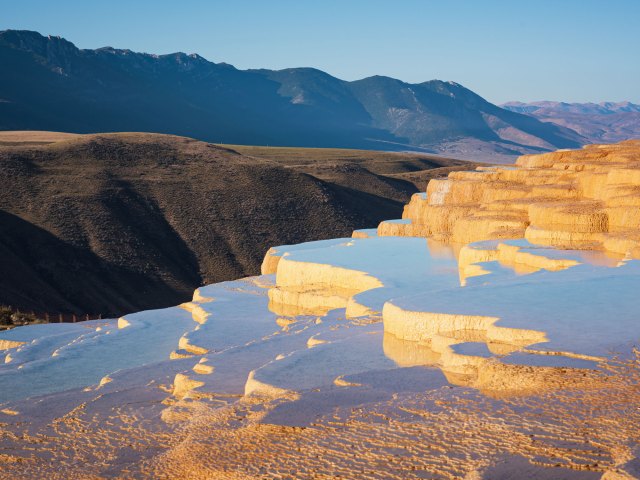
Local legend has it that these mineral-rich pools in this cotton-growing region of southwestern Turkey were formed from hardened cotton that was left over by giants. Thus the name Pamukkale, which translates to “cotton castle.” Seventeen terraces of snow-white travertine — a type of limestone that is formed by mineral deposits from natural springs — capture the waters, which reflect the dazzling cerulean skies of this surreal landscape.
The dramatic contrast between turquoise water and terraced travertine makes the natural thermal pools in Pamukkale an impressive sight to behold, but while the UNESCO World Heritage Site might be popular within Turkey, it’s lesser-known worldwide. The pools, which range between 95 and 100 degrees Fahrenheit, were traditionally used for bathing for thousands of years. Today, visitors are allowed to bathe in the Antique Pool, situated in the ancient Greek city of Hierapolis, in the same site where Cleopatra herself once swam.
Ngorongoro Crater – Tanzania

As the largest intact volcanic caldera in the world, Ngorongoro Crater has an explosive history. An estimated two to three million years ago, it was the site of one of the tallest mountains on Earth, until the volcano erupted and collapsed, forming the crater we see today. Since Ngorongoro Crater is surrounded by open grasslands, the area is home to a diverse set of animals, including elephants, leopards, zebras, warthogs, gazelles, and lions. A shallow lake within the crater, Lake Magadi, provides an excellent habitat for pink flamingos, making the caldera a premier destination for safaris.
Verdon Gorge – France
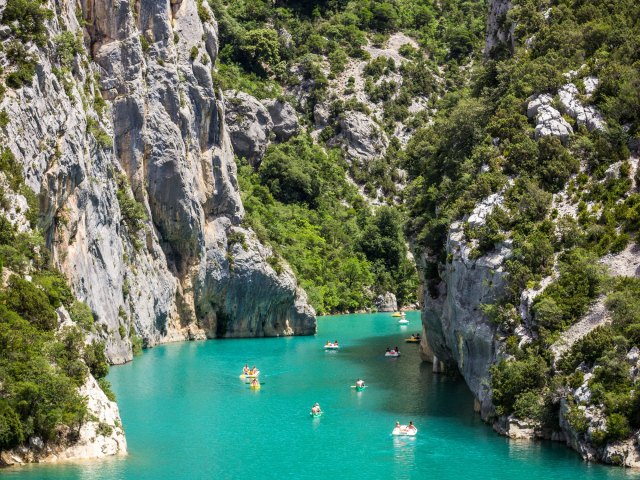
Located in central Provence, Verdon Gorge is the deepest canyon in France, with depths that reach nearly 3,000 feet. Named for its mesmerizing turquoise color, the Verdon River at the bottom of the canyon carves its way between the rock, narrowing to a mere 19 feet at its shortest width. Witnessing the gorge’s beauty from the river is favorited by kayakers and other boaters, who can enjoy a tranquil day paddling between the limestone cliffs. To obtain a view from the top, there are several hikes around the rim that offer impressive perspectives of the winding river below.
Kuang Si Falls – Laos
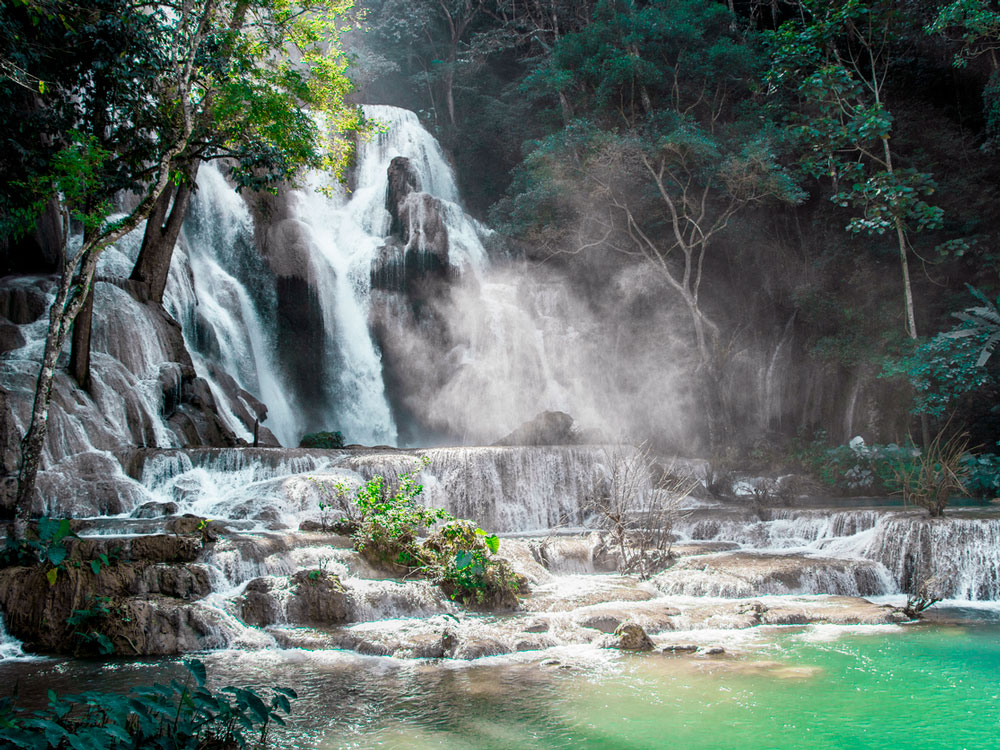
A short drive from the city of Luang Prabang, Kuang Si Falls is a magical destination for any visitors to Laos. According to legend, the falls sprang into existence after a wise old man dug into the earth, at which point a golden deer made its home beneath one of the protruding rocks. Since “kuang” translates to deer and “si” to dig, the tranquil area was named Kuang Si Falls. Today, the falls retain a similar sense of wonder, as the water cascades down limestone terraces in the middle of the Laotian jungle. Best of all, visitors are allowed to swim in the turquoise pools below the falls, weather permitting.
Glacier Country – New Zealand
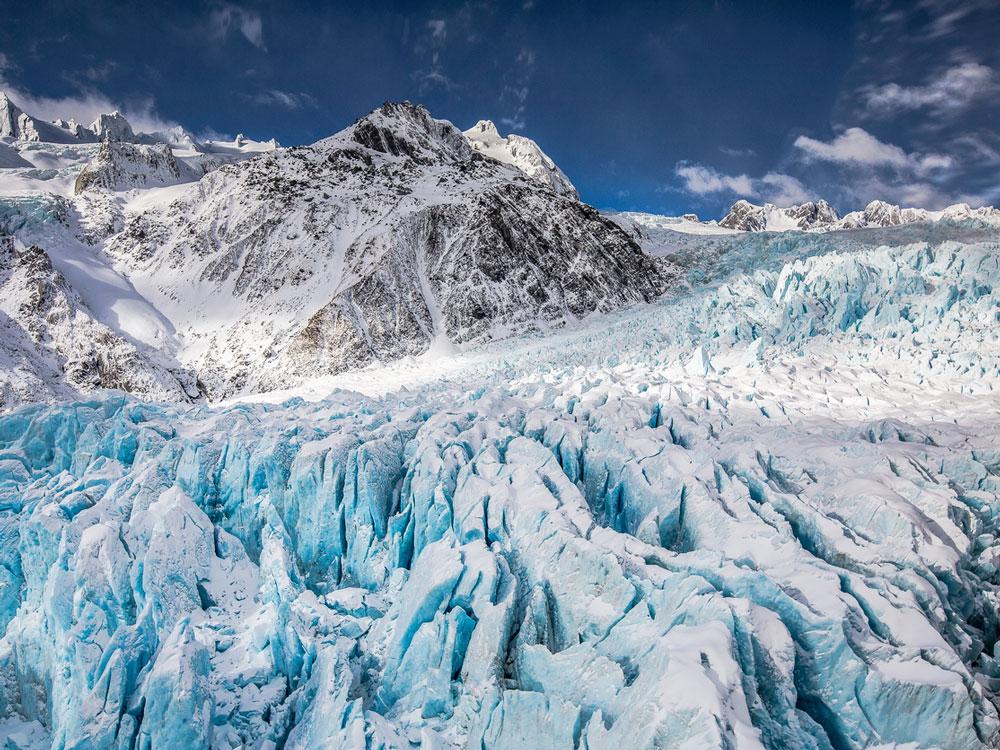
If seeing a glacier is on your bucket list, then a trip to New Zealand may be in order. Located in the “glacier country” of Westland Tai Poutini National Park, both Fox and Franz Josef Glaciers flow nearly to sea level, meaning they’re much easier to access than other glaciers around the world. The base of both can be reached by taking an easy walk, which may include spotting some of the country’s rarest birds. Expeditions on the glaciers are best done with professional guides, who lead trips on foot or via helicopter. Either way, it’s good to know you don’t have to travel all the way to the Arctic Circle to see these icy wonders in person.
Pembrokeshire Coast Path – United Kingdom
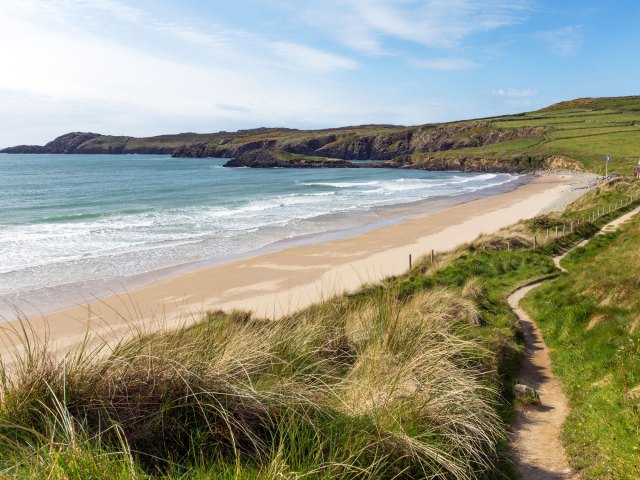
Pembrokeshire Coast Path offers some of the most stunning scenery in all of Great Britain. Stretching for 186 miles along the coast of Wales, the path displays an ancient landscape filled with the largest variety of rocks in Britain. Divided into four distinct sections, Pembrokeshire also offers diverse scenery, including dramatic headlands, serene estuaries, and sandy beaches. Although hiking the entirety of the path is sought after by adventurous trekkers, there are several shorter walks that make for a perfect day trip.
Adršpach-Teplice Rocks – Czechia

These massive rock formations on the border of Czechia and Poland weren’t discovered until the 18th century and despite their undeniable beauty, Adršpach-Teplice Rocks remain relatively unheard of today. In fact, it wasn’t until the 19th century, when paths were built between the sandstone towers, that more people began to make the pilgrimage to Adršpach-Teplice. The entrance is marked by a Gothic-style arch made of stone, and the labyrinth of paths inside lead to otherworldly sites such as an orange river, yellow moss, and hidden waterfalls beneath the monoliths.
Grüner See – Austria

Part of what makes Grüner See (Green Lake) such a mystical destination in Austria is that it can only be found a couple of months out of the year. From midsummer until spring, this area is made up of a pleasant park, with benches and trails for locals to enjoy the outdoors. However, when the snow melts and begins to run off the mountains, the park transforms into a lake with depths that reach 40 feet. Since the water is snowmelt, the lake is cold, clear, and vibrantly green. When it was still permitted, Grüner See was frequented by scuba divers, who loved to dive beneath the strange waters for an ethereal glimpse of the temporary subaqueous park.
Paria Canyon – United States

Situated on the edge of southern Utah and northern Arizona, Paria Canyon is renowned amongst backpackers — and little known to everyone else. The canyon provides phenomenal views of striated red rock, winding stone passageways, and colorful gorges throughout 112 acres of wilderness. With several major geological sites to see, “The Wave” in Arizona is most sought after for its undulating rock formations. To visit this unique site, a 5.5-mile hike is required, in addition to a permit for Coyote Buttes North.
Salar de Uyuni – Bolivia
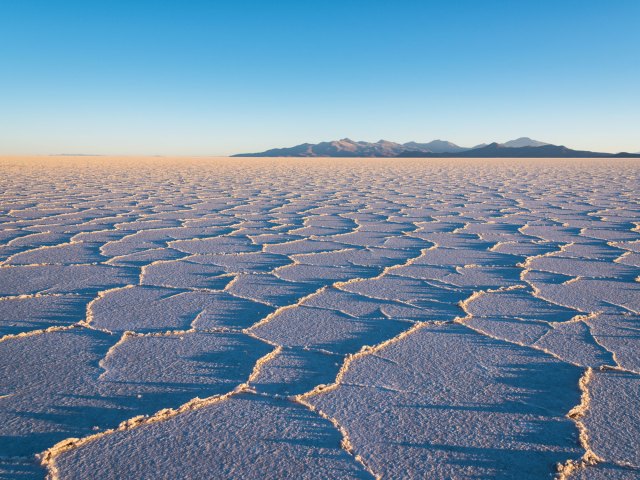
Roughly the size of the state of Connecticut, the largest salt flat in the world covers 4,050 square miles of Bolivia’s western landscape. Salar de Uyuni (Uyuni Salt Flat) formed when a prehistoric lake dried up between 10,000 to 25,000 years ago, and today, the salt pan is a major source of salt for the country. Visitors may best appreciate a visit to Salar de Uyuni during the rainy season, when the flat collects rainwater to create a mirrored reflection on the surface. A popular place to stay nearby is the Hotel Palacio de Sal, located on the edge of the salt flats and built entirely of salt.
Wadi Nakhar – Oman
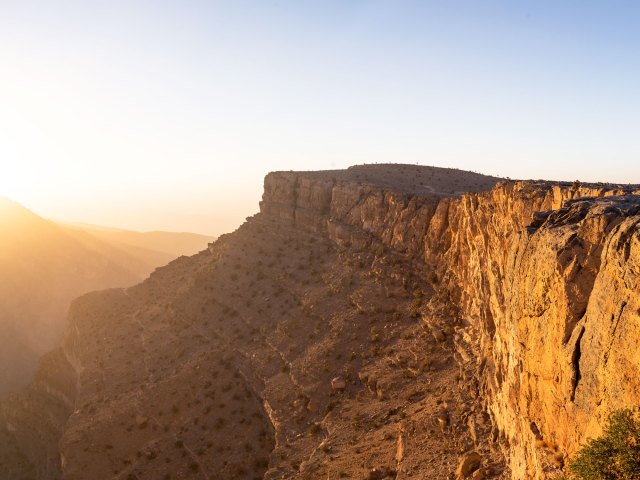
Nicknamed the “Grand Canyon of Oman,” Wadi Nakhar is arguably more impressive than the famed Arizona canyon. It is 650 feet deeper than the Grand Canyon, and is less flooded with tourists. A six-hour drive from Dubai, Wadi Nakhar is most famous for its “Balcony Walk,” a path that leads visitors past the canyon’s rim to the abandoned village of As Sab. With hiking trails throughout, Wadi Nakhar is geologically stunning in its entirety, with rock layers that are over 30 million years old.
The Burren – Ireland

Derived from the Gaelic word boíreann, meaning “rocky place,” the Burren is a region of Ireland best known for its unusual geology. Covering 99 square miles of land, the stony area primarily consists of limestone pavements (clints) and vertical fissures (grikes). Despite its rocky exterior, the landscape is dotted with plants that love limestone, such as foxgloves, mountain avens, and rockroses. The region’s rainwater drains into a network of vast, subterranean caves, like Aillwee Cave, which lurks beneath the craggy landscape.
Marble Caves – Chile
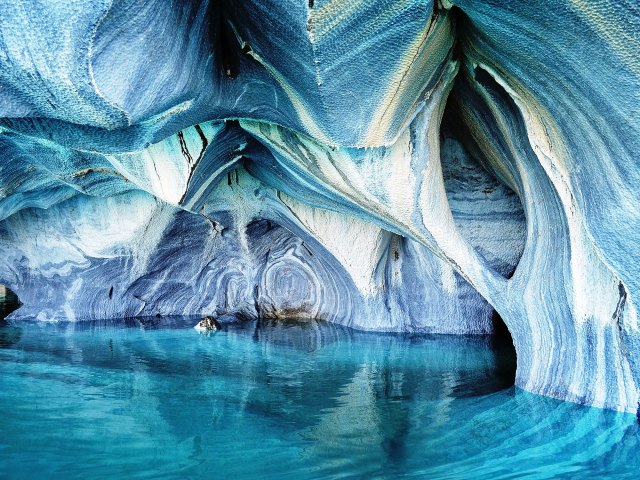
Patagonia might be famously known as “the edge of the world,” but the region’s remote Marble Caves are relatively unknown. Located along the Chilean edge of General Carrera Lake, a glacial lake dividing Chile and Argentina, the caves are located on a peninsula made entirely of marble. The cavern’s smooth interior was formed from water eroding the stone over thousands of years, and the shockingly blue color is a reflection of the turquoise lake water. Accessible only by boat, the caves are most mesmerizing during the austral summer between December and March, when the Patagonian roads are sure to be open.
Sossusvlei – Namibia
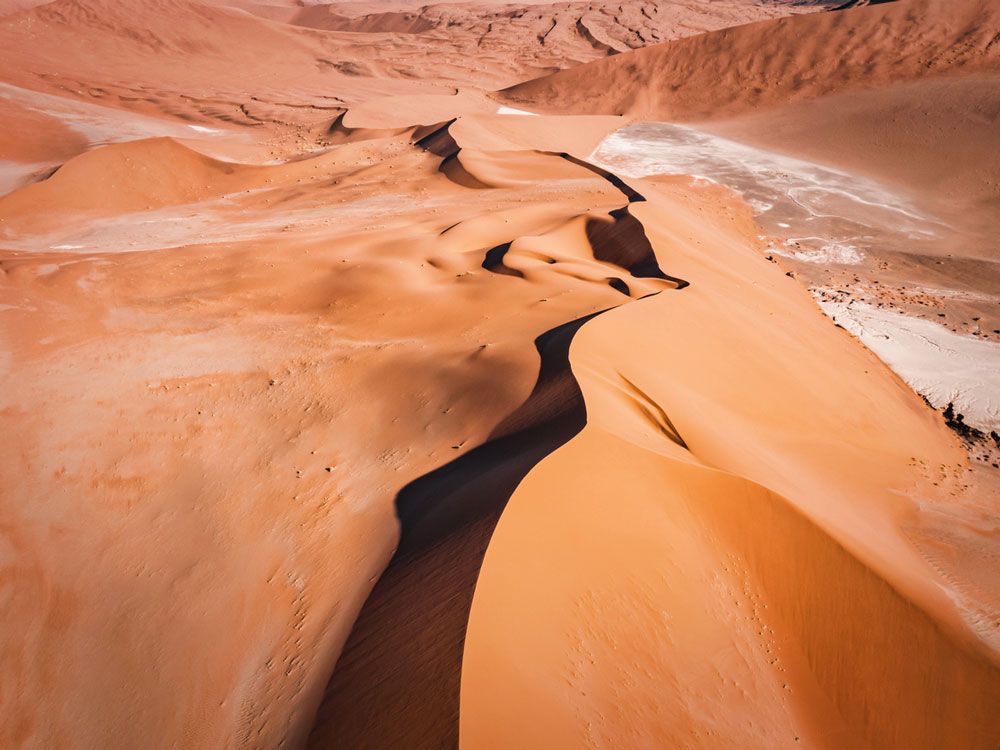
Sossusvlei is home to some of the tallest sand dunes in the world, in one of the oldest deserts on Earth. Approximately 55 million years old, the Namib Desert is filled with jagged mountains, barren plains, and the undulating red sand dunes of Sossusvlei. More stunning in person than in photos, these sand dunes are known to shift in the wind, erase footprints, and even change color. As a result, most visitors are boggled by their beauty and size. The most popular dune to visit is Dune 45, which stands roughly 278 feet tall and can be climbed in an hour.
Shilin Stone Forest – China
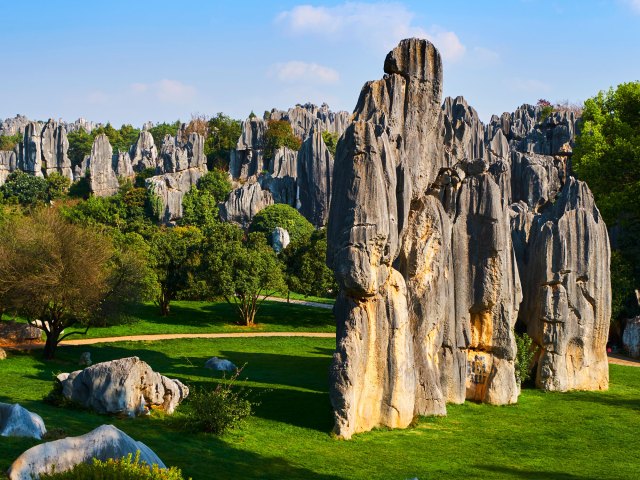
Located in the Yunnan province of China, Shilin, which translates to “Stone Forest,” consists of karst formations that are estimated to be 270 million years old. Millions of years of erosion have caused the limestone to produce ridges, towers, and fissures on the landscape, creating the effect of a forest made of stone. The interior of the stone forest is home to an array of other scenic and geological features, such as caves, ponds, and an underground river. The most frequently visited attraction is the Ashima Stone, which resembles the figure of a young woman and serves as a symbol of protection for the Yi people.
Kravice Waterfalls – Bosnia and Herzegovina

Often compared to the famed Iguazu Falls of South America, the Kravice Waterfalls are less-known and less frequented, making them all the better to visit. Located in the Balkans, the waterfalls surround a forested amphitheater, plunging as far as 83 feet into the water below. Although Kravice’s proximity to Dubrovnik, Croatia is making it an increasingly popular spot amongst tourists, the falls still feel like a hidden paradise for adventure travelers. Bathing is allowed within the 500-foot-deep pool beneath the falls, with a rope swing that’s favored by thrill-seekers.
Pink Lakes – Australia
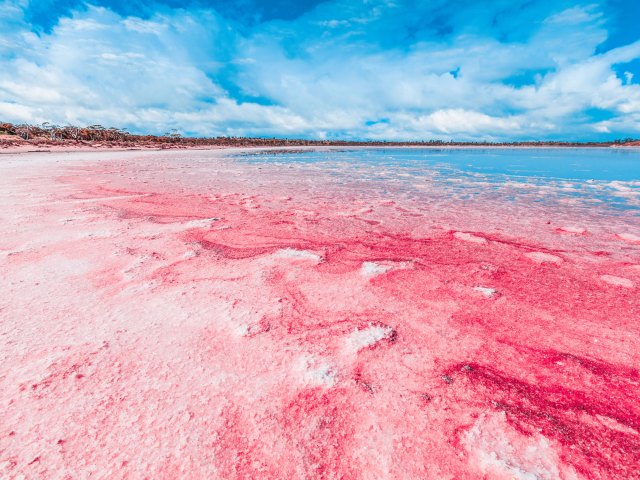
Australia is home to a rare phenomenon known simply as the “Pink Lakes.” Ranging from rose to fuchsia to bubblegum pink, these colorful bodies of water are anything but ordinary. The most popular pink lakes are Lake Hillier and Bumbunga Lake; of the two, the latter is the most accessible — a short drive from the city of Adelaide. Even more extraordinary, it wasn’t until recently that scientists discovered the reasoning behind the eye-popping colors. The lakes contain certain algae and microorganisms that thrive in saline water, both of which secrete red pigments to create the lakes’ signature hues.
Featured image credit: Noah Baslé/ Unsplash






